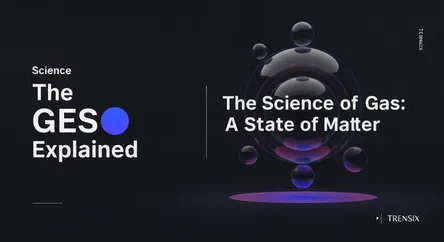Science
The Science of Gas: A State of Matter Explained

An introduction to gas, a fundamental state of matter. Discover its unique properties, its role in climate change, and its impact on everyday life.
What is it?
Gas is one of the four fundamental states of matter, alongside solid, liquid, and plasma. A substance in a gaseous state has no fixed shape or volume. Unlike solids and liquids, the particles (atoms or molecules) in a gas are widely separated and move randomly at high speeds. This particle arrangement gives gases unique properties: they have low density, are highly compressible, and will expand to fill any container they occupy. While many gases are invisible, they are described by measurable properties including pressure, volume, and temperature.
Why is it trending?
The study of gases is central to understanding major global issues. Discussions about climate change are dominated by the topic of greenhouse gases, such as carbon dioxide and methane, which trap heat in the atmosphere and contribute to global warming. Human activities, primarily the burning of fossil fuels like coal, oil, and gas, are the main drivers of increased greenhouse gas concentrations. Furthermore, natural gas remains a critical component of the global energy supply, with its pricing and consumption being constant topics of economic and geopolitical importance as the world navigates a transition to renewable energy sources.
How does it affect people?
Gases are integral to life and technology. The air we breathe is a mixture of essential gases, primarily nitrogen and oxygen. In our homes, natural gas is used for heating and cooking, while argon fills incandescent light bulbs. Carbon dioxide is used to carbonate beverages, and nitrous oxide has medical applications as an anesthetic. Industrially, gases like acetylene are used for welding, and helium is vital for manufacturing fiber optic cables. The behavior and management of gases, from life-sustaining oxygen to pollutants, profoundly impact human health, environment, and economy.